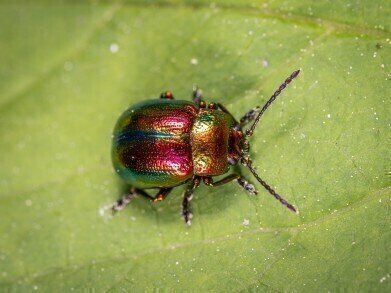Air Monitoring
Plants, Insects and Even Your Fingernails Could Soon Be Monitoring Your Environment
Dec 09 2014
Tiny sensors may soon be measuring air quality, according to many specialists in nanotechnology. Ultra-thin and flexible electronics, which can be attached to plants, insects, paper and even our fingernails, could act as sensors, detecting airborne toxins and pollutants.
Research and development
At Ulsan National Institute of Science and Technology (UNIST), researchers and developers have been working towards manufacturing tiny electronic sensors, which could be mass produced and used to generate detailed data regarding air quality, temperature and humidity. Syncing this environmental data with other available information may even highlight links between environmental conditions and certain illnesses.
Phys.org reports, "The new approach takes advantage of the unique atomic geometries of carbon to synthesize entire arrays of electronic devices, specifically carbon nanotube transistors, carbon nanotube sensors, and graphite electrodes."
Application
Much like postage stamps, the tiny sensors could be applied to a number of surfaces simply by wetting them first. To date, researchers have successfully attached sensors to stag beetles, newspaper, fingernails and bamboo, as well as a number of other materials. The sensors, which feature integrated antennae, have been used to detect DMM vapour, which is used in sarin gas.
Wearable technology and its uses
Increasingly, wearable technology is being touted as a viable solution to a number of problems as discussed further in The Future of Air Monitoring and Wearable Technology. Air purification headsets, for example, which filter and monitor the air around us, may soon hit the shops in China and Far East, while researchers in Scotland are currently using rucksacks equipped with monitoring devices to measure air pollution – and its effects – in Edinburgh.
Crucially, these devises harvest and transmit data, enabling us to create a detailed “pollution picture”. In the future, we may be able to access this data via a smartphone and purposefully avoid heavily polluted areas, or even choose to wear a pollution mask or air filter. In addition to this, those in power may seek to alleviate congestion in heavily polluted areas, putting new transport laws in place or incentivising the use of public transport.
Understanding air pollution and its effects
Air pollution is a relatively new problem yet its effects are already in evidence. Naturally, the better we understand pollution, the more we can do to counter its effects. Wearable pollution sensors integrate easily into our daily lives and may provide us with invaluable information that could be used to protect human health. In addition to this, understanding the environmental impact of our actions may prompt us to change our behaviour.
If everyone is able to access and understand information regarding the environment, environmental issues may be talked about more widely and taken more seriously by those in power; who knows, tiny sensors may well facilitate big changes in years to come.
Digital Edition
IET 34.2 March 2024
April 2024
Gas Detection - Biogas batch fermentation system for laboratory use with automatic gas analysis in real time Water/Wastewater - Upcycling sensors for sustainable nature management - Prist...
View all digital editions
Events
Apr 22 2024 Hannover, Germany
Apr 22 2024 Marrakech, Morroco
Apr 23 2024 Kuala Lumpur, Malaysia
Apr 23 2024 Kintex, South Korea
Apr 23 2024 Edmonton, AB, Canada


















